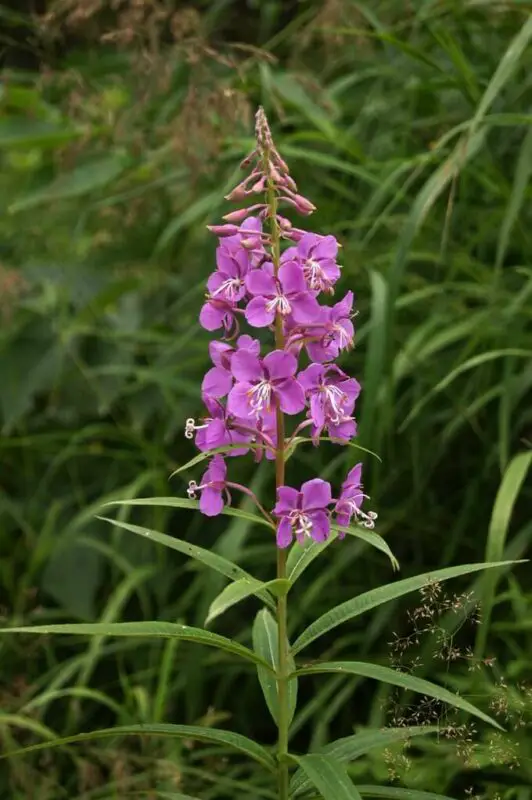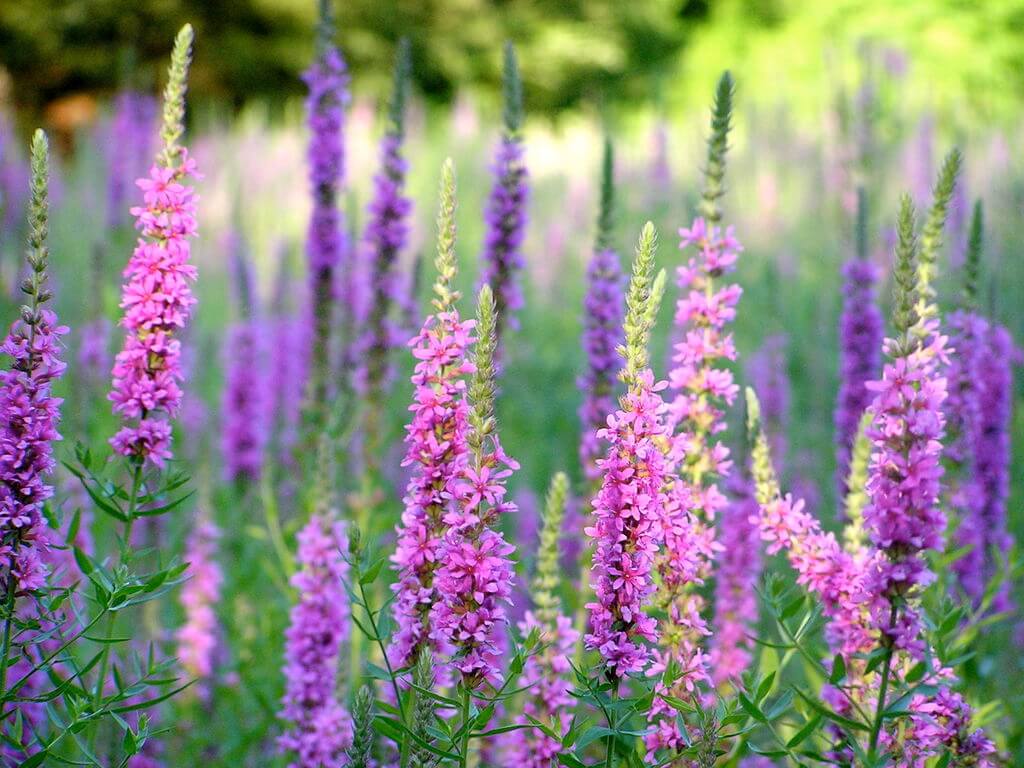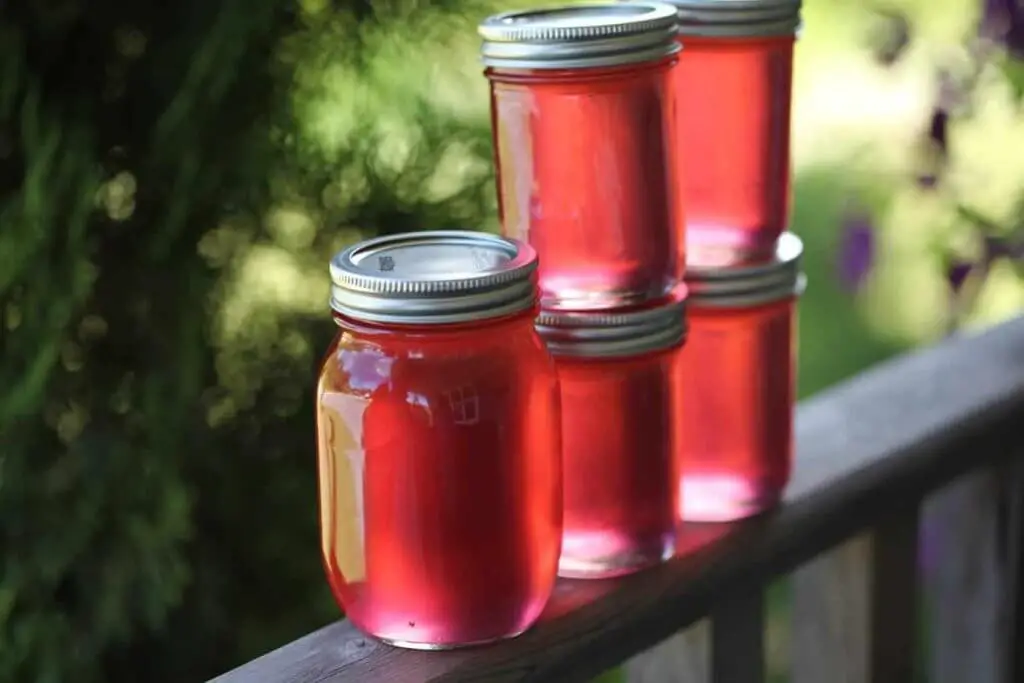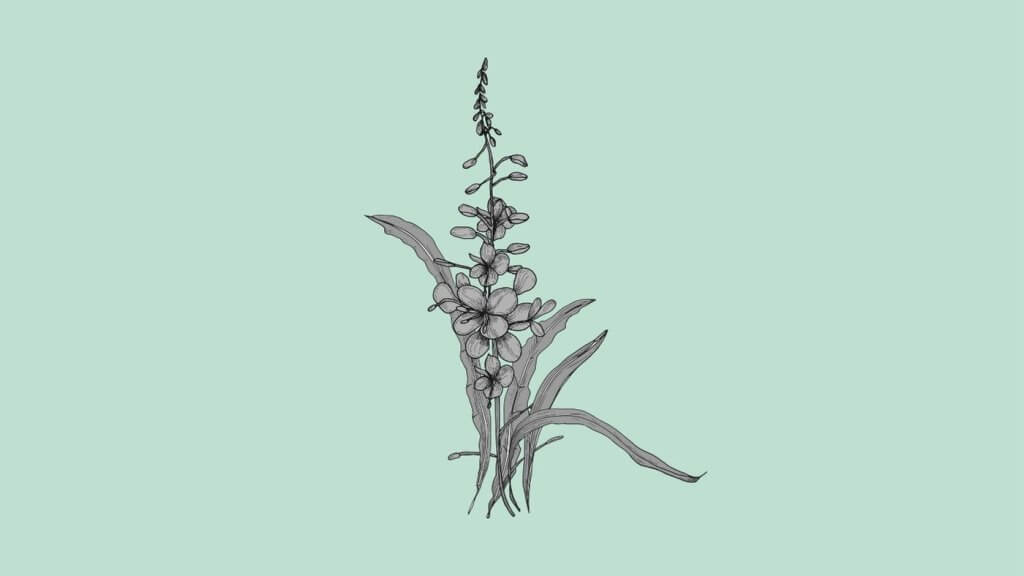Chamerion angustifolium (fireweed) is a herbaceous perennial flowering plant hailing from the Onagraceae family, otherwise known as the evening primrose of the willowherb family. This is an edible wildflower mostly known for its tea and flower jelly.
Chamerion Angustifolium Plant Profile
In North America, Chamerion angustifolium is known by its common name of fireweed.
But, parts of Canada only know the fireweed as the great willowherb or wickup.
If you come from Britain or Ireland, you may know this native plant as:
What Are You Foraging For Right Now?
We're thrilled to hear your ideas. What would you like to submit today? Feel free to share your thoughts and experiences with us.
- Rosebay willowherb
- Bombweed
- Saint Anthony’s laurel
Some of its synonyms may also include Epilobium angustifolium.
Where can you find Fireweed?
It occurs throughout the United States except in the southeastern states and Texas.
Like many weed-like plants, the seeds can lie dormant for several years. They need warmth for germination.
Because of this, fireweed will be one of the first plants to appear in disturbed sites after a bush or forest fire.
Then, it can be pretty invasive, rapidly covering the scrub or woodland areas cleared by a machine.
Fireweed is usually abundant when the soil is wet calcareous to partially acidic. Burned-over lands, pastures, open fields, and newly cleared and burned areas are perfect locations.

Fireweed Identification
One of the most distinguishing features of the Chamerion angustifolium is its whitish to magenta flowers in the form of spikes.
They grow to an impressive 5 feet. This growth can make for quite a fantastic sight on prairies in the temperate zone.
Simple, erect, reddish and smooth stems reach about 3 to 8 feet in height. The stems are scattered with alternate leaves arranged in a spiral and narrowly lanceolate with pinnate veins.
You can also look for the inflorescence as a symmetrical terminal raceme. This combines with a bloom from bottom to top, resulting in a gracefully tapered shape.

Fireweed vs. Purple Loosestrife
Chamerion angustifolium shares similarities with the purple loosestrife plant (Lythrum salicaria). Their bloom-time flowers appear very similar at a distance.
But, closer inspection will likely give away the tell-tale signs that these are different plants, such as:
- Fireweed boasts pink and purple flowers that grow in a spike formation, and its flowers have four petals. In contrast, purple loosestrife sports flowers that have five to seven petals on each flower.
- The stems of these two plants are also different. Purple loosestrife has a square-shaped stem, whereas the fireweed’s stem is much more circular.


Can you eat Fireweed?
Yes, fireweed is an entirely edible plant.
You can use the flower buds in a salad; raw is fine. The plant has the most edible nature when young, but you can still eat older plants.
Snap the flower off at the base. Then, remove the leaves, clean and eat them similar to spinach.
Be wary of highly aged fireweed leaves. As they grow, the leaves will bend down and end up green. The green leaves are too tough and bitter to eat.
What does Fireweed Jelly taste like?
Fireweed jelly (made from fireweed flowers) tastes similar to blackberry or crowberry jam and is a perfect spread on bannocks or toast.
Here’s a great recipe for fireweed jelly that you can try.

Is Fireweed Tea Good for You?
Centuries of use in traditional medicine suggest that fireweed tea has health-promoting properties:
- To start with, fireweed tea helps to soothe mental tranquility and sleep.
- Fireweed is full of an easy-to-digest protein that restores energy, vivacity, strength, and vitality in the body.
- Fireweed tea is also packed with vitamin C and several B Vitamins.
Check out our video on 5 more plants to forage for better sleep.
How to make fireweed tea?
Like other herbal teas, fireweed tea isn’t simply dried leaves in hot water.
Instead, you need to ferment the leaves like black tea.
This results in a tasty version of black tea without all the caffeine.
Other plant teas you may want to try include blue vervain and yaupon holly tea.
How do you Cook Fireweed?
- You can cook the willow-like young shoots and leaves to eat. Cut these when the leaves are still red. These are the most tender shoots.
- Because the sweetness (or bitterness) in fireweed shoots varies unpredictably, you’ll want to taste them before you decide how to cook them.
- Young, very sweet shoots can be eaten raw. But, if they are bitter, you can blanch them in boiling salt water before adding them to any recipes.
Getting into the great, wet outdoors in search of edible plants, herbs, fruits and fungi is one of Sarah’s favorite outdoor pursuits. She thinks there’s nothing better than combining her passion for hiking with the start of the foraging season. Sarah’s definitely not afraid of a little rain and dirt, it’s all part of the fun.

